#Ceratosauria
Explore tagged Tumblr posts
Text
Caletodraco cottardi Buffetaut et al., 2024 (new genus and species)
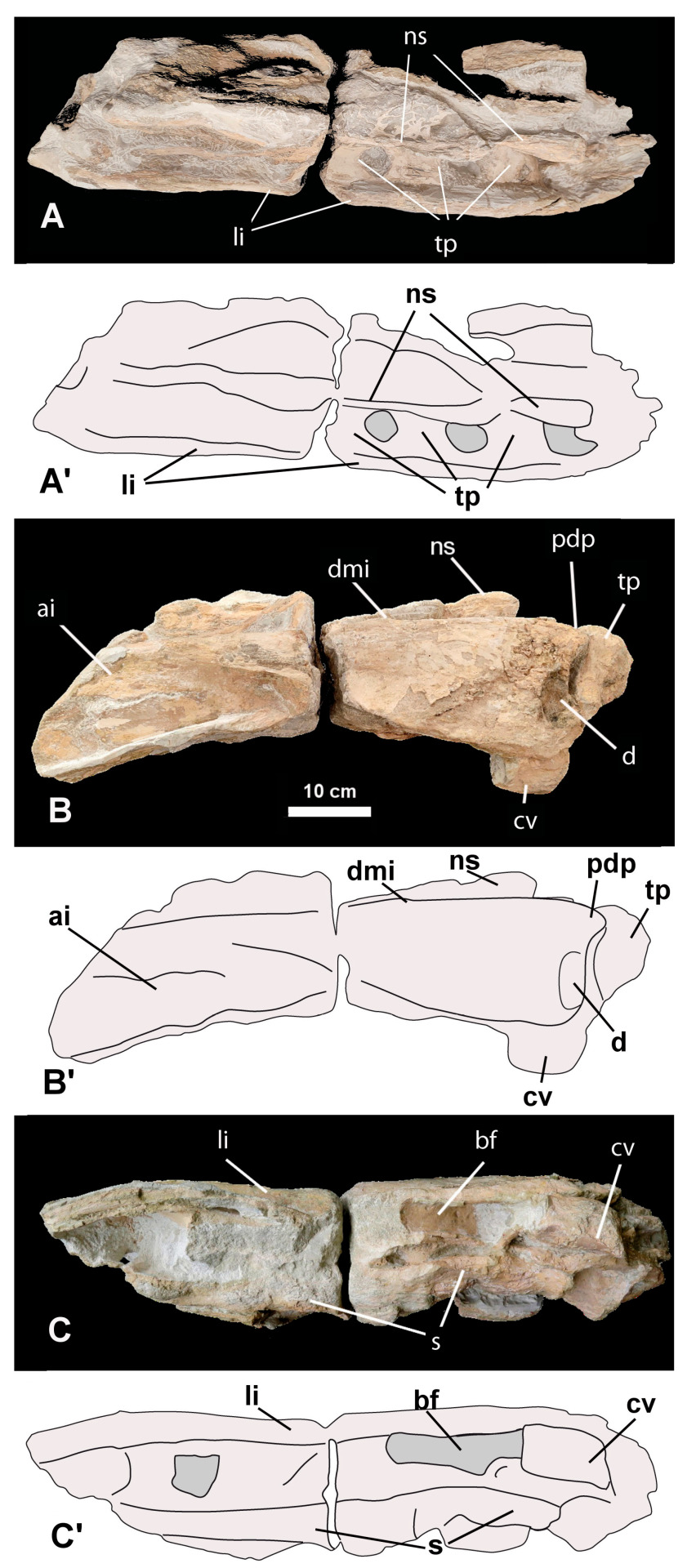
(Type specimen of Caletodraco cottardi, from Buffetaut et al., 2024)
Meaning of name: Caletodraco = Caleti [Celtic tribe that lived in what is now Normandy] dragon [in Latin]; cottardi = for Nicolas Cottard [discoverer of the original fossil]
Age: Late Cretaceous (Cenomanian)
Where found: Saint-Jouin-Bruneval, Normandy, France
How much is known: Partial skeleton of one individual including a partial hip and a tail vertebra. An isolated tooth found nearby may also belong to same individual.
Notes: Caletodraco was an abelisaurid ceratosaur, making it a close relative of genera like Carnotaurus and Aucasaurus. Most abelisaurids are known from the Southern Hemisphere, but they have also been found in Europe. Caletodraco is one of the oldest known European abelisaurids, and the first dinosaur to be reported from the marine fossil sites of the Pays de Caux region in Normandy.
Reference: Buffetaut, E., H. Tong, J. Girard, B. Hoyez, and J. Párraga. 2024. Caletodraco cottardi: a new furileusaurian abelisaurid (Dinosauria: Theropoda) from the Cenomanian Chalk of Normandy (north-western France). Fossil Studies 2: 177–195. doi: 10.3390/fossils2030009
66 notes
·
View notes
Text

Day 11: Injury
A late Jurassic goniophilidid Amphicotylus milesi is unfortunately lost his tail to hungry Ceratosaurus for easily catch, but luckily to survive with injuries.
#my art#dinosaur#myart#paleoart#dinosaurs#my drawings#dinosauria#ceratosaurus#ceratosauridae#ceratosauria#theropoda#archosaurs#crocodylomorphs#croctober#late jurassic#morrison formation
23 notes
·
View notes
Text
Birds of Tehar

Note: Tehar has a taxonomic system somewhat different from the one in OTL. =otl is used to show what OTL clade is equivalent to that clade on Tehar. If =otl is not used, the clades are the same in two timelines.
Birds (Aves, =otl Theropoda) is the most diverse terrestrial vertebrate clade (typically considered a class) on Tehar, with over 13000 species inhabiting the planet's whole surface, except for deep oceans and some caves/subterranean ecosystems. Birds are a relatively young group of animals, having first evolved in Triassic and being closely related to another living class, gryphons (Gryphi, =otl Ornithischia) and an extinct class Anserotitania (=otl Sauropodomorpha), united together in a clade called dragons (Dracones, =otl Dinosauria). They are also more distantly related to suchians (Suchia, =otl Pseudosuchia).
Some characteristic features of birds are their, at least ancestrally, bipedal gait, light pneumatized skeletons and complex breathing system with air sacs inside their bodies; some traits, such as strict oviparity, feathers and endothermy, are shared with other dragons; finally, a common feature for most but the most basal birds today is complex feathers and ability to fly.
Historically, there were many different ways to classify birds, such as splitting birds into Pterygornithes, incorporating all winged birds, and Apterygornithes, incorporating the archaic wingless lineages; or dividing them into Odontognathae (toothed) and Anodontognathae (toothless). Externally, it was pretty well-understood that birds and gryphons are relatives, but what other groups do they have relations with has been a subject of debates for decades. Still, nowadays it is pretty well-known that birds (and gryphons) are suchian relatives, and internally, bird class has been divided into 6 living and many more extinct clades.

The most basal living avian clade is Euapterygornithes (=otl Ceratosauria). Wingless, toothed and long-tailed, these avians have branched off the whole avian tree all the way in the Triassic. Nowadays they are a very diverse group, including animals of different sizes, diets and anatomy, having underwent most of that evolutionary radiation relatively recently in the Paleogene. They inhabit Motutea, Kadalia, Tanah and Uzun.
Somewhat less basal than the euapterygornitheans are the motunuiavians, found predominately at Motunui but also at Motutea. These birds are also wingless, toothed and long-tailed, but they have much more rigid tails and are, in fact, closer to all other living bird groups than they are to euapterygornitheans. There is a relatively little number of their species nowadays, most of them predatory. The ancient ferocious regiavids of Cretaceous Uzun are their close relatives.
Third group of birds, enantiornitheans, is extraordinarily diverse. They have lost long tails and are typically volant, with feathery wings helping them stay in the air. However, they have teeth. After neognaths they are the most diverse birds on Tehar, though differences in their ontogenesis and social behaviour make them less prone to high diversification of species (most enantiornitheans, unlike most neognaths, grow slowly and occupy multiple niches as they age). Enantiornitheans are found worldwide.
The fourth, relatively small, avian group is Noctiraptora. While historically these toothed, volant birds have been considered a peculiar branch of enantiornitheans, they are nowadays seen to be closer to palaeognaths and neognaths and particularly close to an extinct lineage of aquatic Cretaceous birds, Palaeolari (=otl Ichthyornithes). Noctiraptorans are exclusively predatory and volant, and are more diverse at Libya and Uzun than any other continent.
Fifth bird group is small and includes almost exclusively secondarily flightless forms. The palaeognaths are edentulous, typically large and cursorial avians widespread on all continents, except for Motutea and Sagastan. They have some typical archaic features that have made them associated with enantiornitheans sometimes in the past, though nowadays they are well-understood to be neognath relatives.
Finally, the neognaths, the most common and diverse avian group on Tehar, inhabits the whole planet and includes a vast number of toothless, typically volant, birds of all shapes and sizes. From tiny songbirds of Uzun's temperate forests to giant flocks of seabirds at the shores of Qaria to terrifying bearbirds of Hatunwata, most birds on Tehar are neognaths.
#speculative evolution#worldbuilding#speculative biology#spec evo#birds#dinosaurs#bird art#dinosaur art#tyrannosauroidea#ceratosauria#enantiornithes#palaeognath#neognath#creature
17 notes
·
View notes
Text
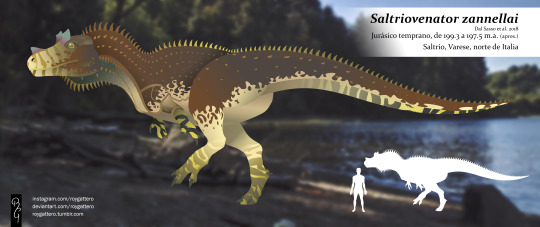
Saltriovenator zannellai
vector illustration, 2024
3 notes
·
View notes
Text
If I may add some cool info about this cool-ass dino, Carnotaurus was a member of a group of theropod dinosaurs called the abelisaurs, and while it may be the only one confirmed to have keratin sheaths on its horns, it was by no stretch the only one to have weird lumps and bumps on its head. Just look at Majungasaurus crenatissimus, from Madagascar (photo credit : ДиБгд, on the wikipedia page for Majungasaurus)

Look at that lumpy-ass noggin! (The dinky little horn may have been a horn, as in the picture, or just a tiny ossified skull-cap)
Oh, but that’s not all. These guys ranged across Gondwana throughout the Late Jurassic and Cretaceous, but based on current research, they were part of a much larger group, which went even further back, called the Ceratosauria, a group whose name means “Horned Lizards”, and includes the group’s eponym, Ceratosaurus nasicornis, which literally mean “The Horned Lizard with a Horn on its Nose.” And these guys, at least in the Jurassic, ranged across Europe and North America, too!

Just look at that big horny guy! (Artist credit Gregory S. Paul)
So, my brother and I watched Dinosaur (2000) relatively recently, and besides the fact that it's a bad movie with horrendous character design, one thing pissed him off more than anything else: the movie's use of the word "carnotaur".
Now, to him, this word was just an infuriating attempt at saying "carnivore", which in context, makes sense. What neither he nor I knew at the time is that this is not the case. Carnotaurs are real dinosaurs. And they're really cool.
Carnotaurus sastrei, the only one of its genus, is one of the few dinosaurs we have with some of its skin preserved. We know from those preservations that it had scales, which is one of the things we assume generally about dinosaurs that we have very little evidence for. Carnotaurs also were the only known carnivorous dinosaurs with horns, which is why it's named after a bull. The other half of its name (carno-) means "meaty", and even just looking at the skeleton, you can tell that it was one THICC ASS BOI.

I'm at least 90% certain this motherfucker looked like a sausage with teeth and thighs. We all clown on the T-Rex for its tiny arms, but look at this motherfucker. We're talking whale pelvis levels of vestigial here.
Another cool thing is that geographically, the movie having these as the main hunters makes more sense than having Tyrannosaurs. T-rex lived in what is now North America, whereas these death bratwurst lived in South America. We know that the asteroid that caused the extinction of the dinosaurs landed in the Gulf of Mexico, and given that we see in the movie that very asteroid hit the earth, I don't think it takes place in what would one day become California.
All this to say, Elliot, I know more about dinosaurs than you. Suck it.
#nature#paleontology#dinosaurs#carnotaurus#majungasaurus#ceratosaurus#abelisaurs#ceratosauria#nature sure loved her some pointy bois
228 notes
·
View notes
Text
Carnotaurus sastrei sculpture
I've wanted to make a post about this sculpture's process, so I will take advantage of how Tumblr works to show photos of the phases and my experience using Milliput for the first time.
Unfortunately, I don't have photos of the exact beginning, but here's an image from a story I posted on Instagram. You can see that the sculpture is at a very early stage and is a general volume of what would later become the final figure, the whole inner part is made with aluminum foil, cardboard, and painter's tape, while the first outer layer is made with cold porcelain.
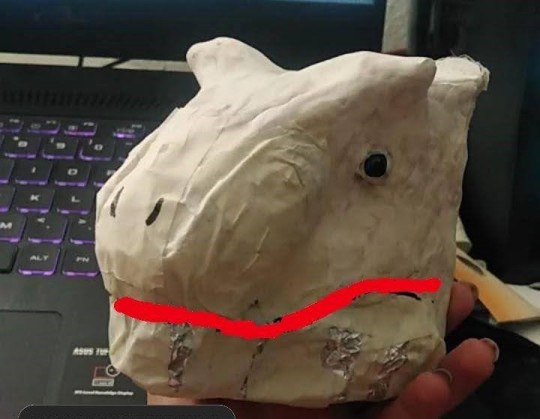
Once the bust was covered with cold porcelain and it had dried I could start sculpting the first details using Milliput, an epoxy mass that gives you 3 to 4 hours to sculpt and the truth is that I was pleasantly surprised because it allows it to work very well small details and is very easy to handle, the only thing I should have taken more into account is that once dry the Milliput gives a lot of weight to the figure.
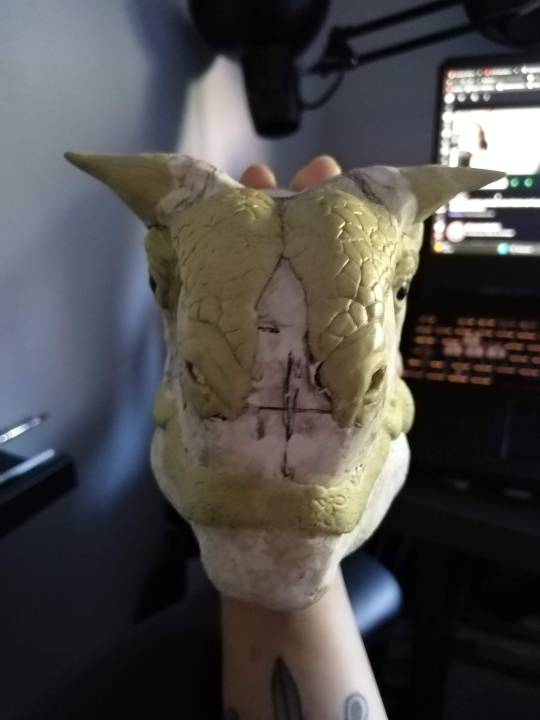

In this first phase of detailing I focused on working in those areas that were going to require more time due to the type of texture of each one. For example, in the eyes, there are a lot of folds and wrinkles, in the horns I wanted to achieve the growth of the keratin.
For the next phase, the whole part of the skin of the face, I was guided by the images of the study of the scales of the Carnotaurus of 2021_ The scaly skin of the abelisaurid Carnotaurus sastrei (Theropoda: Ceratosauria) from the Upper Cretaceous of Patagonia.
I also used them as a reference for the paleoart scales that in my opinion showed me very well or at least gave me an idea of how I could work the skin of my bust. For example one of my mains references while doing this sculpture was the art of Fred Wierum
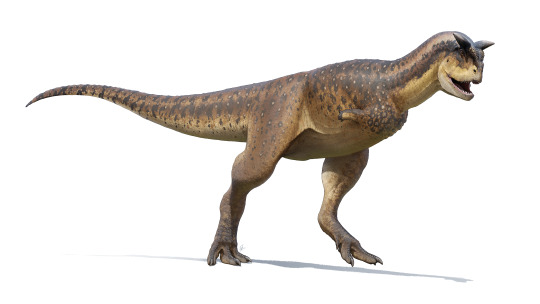

Now how I've tried to apply what I search about the scales.

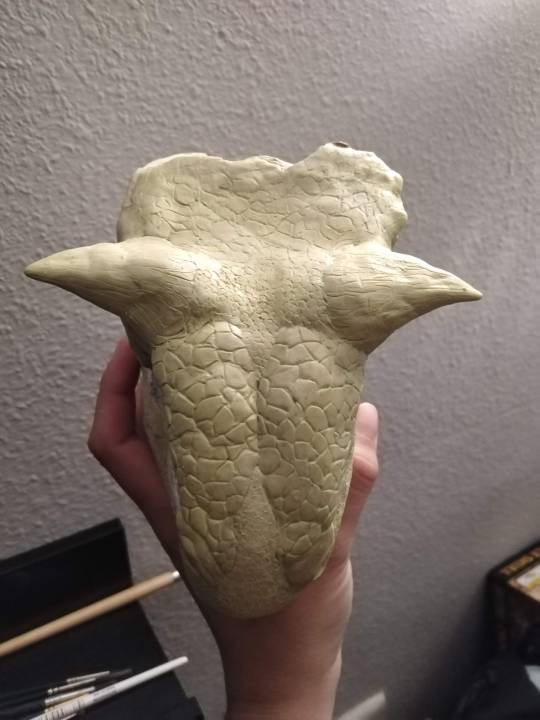
At first I was not sure if I was going to make a neck, but as I progressed with the sculpture I could see that I was going to need the neck to give it more shape and put it on a good base.
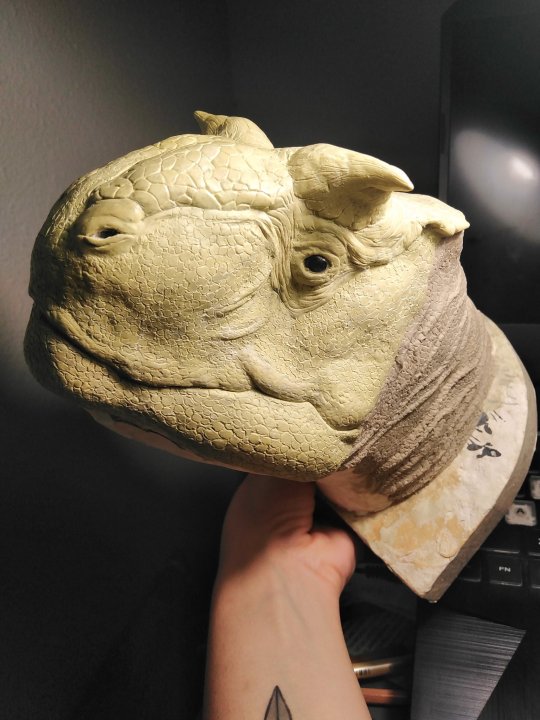
With all the sculpting part done It was time to prime the dino!

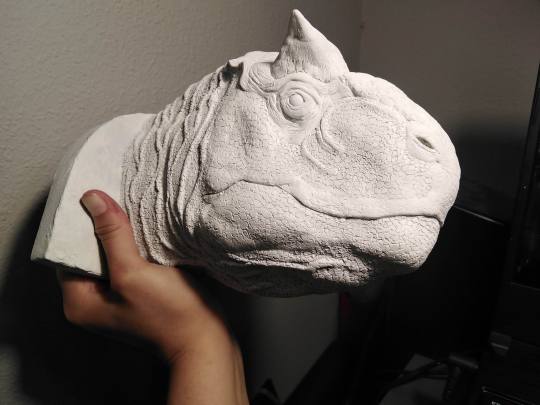
For the painting part of the bust I wanted to try to get away from the red and yellow that is usually painted, so I decided to do some research on the types of lizards that live in Argentina and see if any of them had a pattern and colors that would fit what I was looking for. In the end I discovered Fitzinger's tree iguana, an animal with very nice colors and pattern that moved away from the reds and mixed greens with oranges and blues.
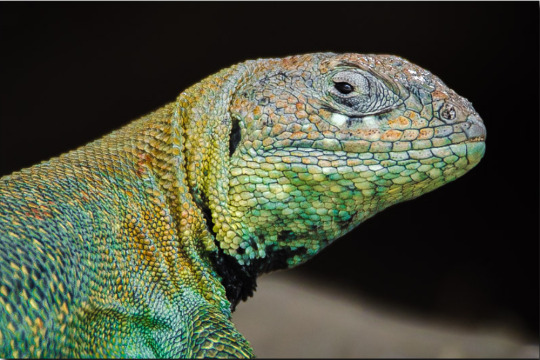
Photo credit: Roman Montero
And finally, the complete sculpture!


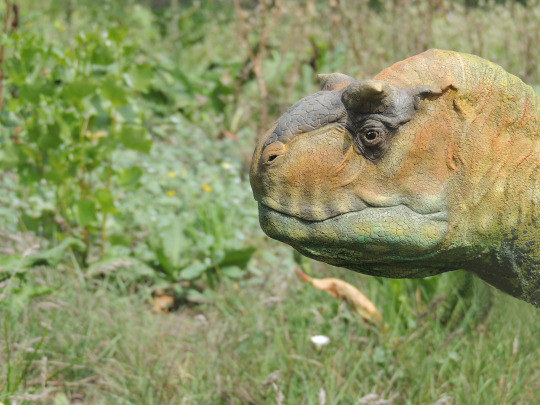

So here it is, I am very happy with this bust and the learning process I have gone through to make it as correct as possible.
Hope you like it!
#art#animals#dinosaur#paleomedia#paleoart#science#carnotaurus#sculpture#milliput#paleontology#argentina
243 notes
·
View notes
Text
Archovember 2024 Day 7 - Vespersaurus paranaensis

The rare noasaurids were a family of theropod dinosaurs belonging to the group Ceratosauria, and were related to the short-armed abelisaurids. One noasaur, Masiakasaurus, brought the family into the limelight recently with its appearance on Prehistoric Planet. But in Cretaceous Brazil, a different noasaur left its strange, monodactyl footprints across the sand. Vespersaurus paranaensis had two “killing claws”, on each foot, but not like a Velociraptor, or a Balaur, or even like modern Accipitriformes. Instead, it walked on its middle toe, while its 2nd toe and outer toe were raised off the ground. This may have been an adaptation to moving swiftly across the hot sand of the Botucatu Formation, a vast Cretaceous desert. Such an adaption has not been found in any other archosaur. Vespersaurus probably didn’t actually use these claws for hunting, and was likely a generalist, chasing down small, fast animals, opportunistically scavenging the kills of other predators, or hunting weak and injured animals. It may have instead used its claws in powerful defensive kicks, similar to modern cassowaries.
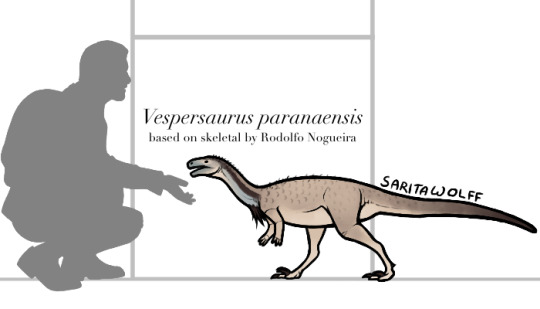
Other named species have yet to be found in the Botucatu Formation. Aside from Vespersaurus, other fossils include indeterminate coelurosaurs, ornithopods, lizards, tritylodontids, and mammals.

This art may be used for educational purposes, with credit, but please contact me first for permission before using my art. I would like to know where and how it is being used. If you don’t have something to add that was not already addressed in this caption, please do not repost this art. Thank you!
#Vespersaurus paranaensis#Vespersaurus#noasaur#noasaurid#theropods#saurischians#dinosaurs#archosaurs#archosauromorphs#reptiles#Archovember#archovember2024#dinovember#Dinovember2024#DrawDinovember#DrawDinovember2024#SaritaDrawsPalaeo#early cretaceous#middle cretaceous#late Cretaceous#brazil#Argentina#Botucatu Formation
19 notes
·
View notes
Text
THE ONE AND ONLY OTHNIEL CHARLES MARSH

For Throwback Thursday we will be discussing one of the most important people in paleontology: Professor Othniel Marsh. He was born in Lockport, New York to a modest family but he was lucky enough to be the nephew of George Peabody.

Peabody paid for his formal education at Yale College where he received a bachelor's degree in...art?

He did receive a Berkeley Scholarship so he went on to study geology, mineralogy, and chemistry.

Fun fact, in 1866 he was appointed the professor of vertebrate paleontology at Yale University making him the very first professor of paleontology in the U.S.

The Peabody Museum of Natural History was founded and he was made one of the first curators.

Marsh went on to write 400 scientific papers, naming about 500 new species of fossil animals including many of our Morrison favorites:
Stegosaurus

Brontosaurus

Apatosaurus
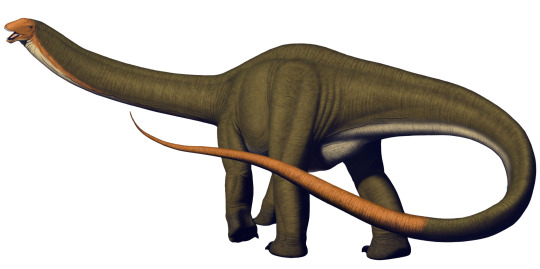
Allosaurus
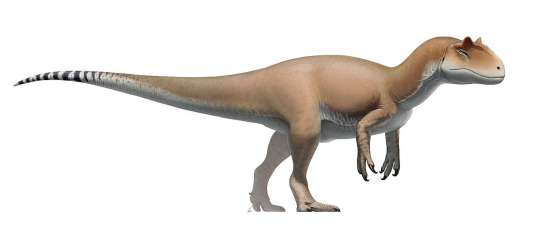
Atlantosaurus

Camptosaurus

Ceratosaurus

Diplodocus

Dryosaurus

and Nanosaurus.
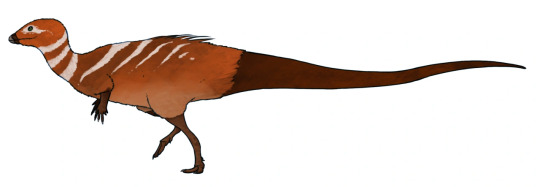
He also named several of their families: Allosauridae, Camptosauridae, Diplodocidae, and Stegosauridae as well as four famous suborders: Ceratopsia, Ceratosauria, Ornithopoda, Stegosauria and Theropoda.
He also had several named in his honor but only Marshosaurus has stood the test of time.
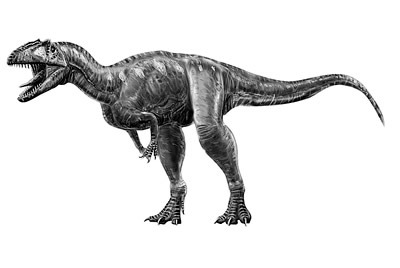
#paleontology#dinosaur#fossils#geology#allosaurus#Othniel Charles Marsh#stegosaurus#diplodocus#apatosaurus#ceratosaurus#dryosaurus#brontosaurus#bone wars#george peabody#yale university#yale peabody museum of natural history
15 notes
·
View notes
Note
What kind of theropod you Disaster wyvern from MHO is? I have him as a Ceratosauria due to looking like an odd brachydios relative
That’s what I thought too initially but I ran into a problem

I think it has 5 fingers
Ceratosaurs have 4 fingers max, which would have to put this guy farther back on the theropod tree. I could just say it has polydactyly like Odogaron, later ichthyosaurs, or even my theory for why pseudowyverns have a stubby extra thumb.
I guess if it is a brachy line ceratosaur then maybe disaster wyverns don’t use their hands unlike brachydios so maybe they don’t have any pressure to keep normal hands?
Also this is ignoring that archosaurs don’t have claws on the 4th and 5th digits of their hands, because Capcom doesn’t seem to know that.
9 notes
·
View notes
Text
Me remembering different major dinosaur clads so I can give Blue Moon a dino
Dromaeosaurids- feathers: Yes. Common known dinos: microraptor, velociraptor, utahraptor. -I like to define them as: rectangle mouth, clawed, robust bird like.
Troodontids- feathers yes. Common known dinos. Saurornithoides, Sinovenator, Mei long. I like to find them as: smaller, Bird like mouthed, intelligent dromosaurus.
ornithomimosaurs- feathers yes. Common known dinos. Deinocheirus, gallimimus, Ornithomimus. I like to describe them as. Ostrich like, fast, sometimes humped back, birds.
therizinosauria-
oviraptorosaurs
Tyrannosaurus
dilophosaurids
ceratosauria
megalosaurids
spinosaurids
carnosaurs
My brain is starting to die. I'll put in most of the herbivores later.
5 notes
·
View notes
Text
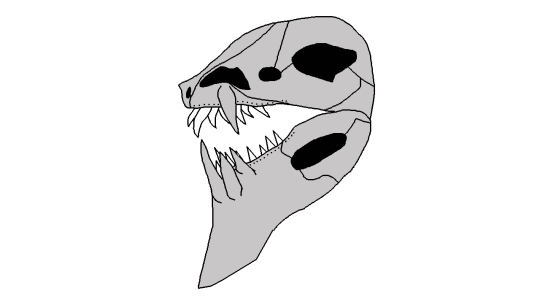
heres a Gasurabazura skull i made with 3D model and Ceratosauria skulls for references!
Gasura is a weird theropod to classify as he seems to be an abelisaurid but due to his longer arms it makes me think that its a Ceratosauria, the outward facing teeth also makes me think that hes a large Noasaurid but idk!
His teeth seems to be more specialized for catching small prey animals which would make sense as from what i know from the frontier lore it hunts the small scorpions Kusubami!
as for my thoughts on Gasura hes decent for a frontier monster, his design is funky lookin and has an ok fight.
8 notes
·
View notes
Text
Koleken inakayali Pol et al., 2024 (new genus and species)

(Maxillae [bones in the upper jaw] of Koleken inakayali [scale bar = 5 cm], from Pol et al., 2024)
Meaning of name: Koleken = from clay and water [in Teushen, referring to the fact that the original fossil was found in claystone]; inakayali = for Inakayal [one of the last chiefs of Tehuelches]
Age: Late Cretaceous (Maastrichtian)
Where found: La Colonia Formation, Chubut, Argentina
How much is known: Partial skeleton of one individual including parts of the skull, spine, and hindlimbs.
Notes: Koleken was an abelisaurid ceratosaur, making it a close relative of genera like Carnotaurus and Aucasaurus. In fact, it is known from the same rock formation as Carnotaurus, so the two may have lived alongside one another. Like other abelisaurids, Koleken had rough patches on the top and sides of its skull that may have corresponded to a keratin covering in life, though unlike Carnotaurus, it did not have prominent horns on the top of its head.
Based on microscopic examination of its bone structure, the type specimen of Koleken was not fully grown when it died, which raises the possibility that it represents a juvenile individual of Carnotaurus. However, the describers of Koleken consider the two more likely to be distinct species, because they differ in details of the skull, vertebrae, and hindlimbs that are unlikely to have changed so dramatically during growth.
Reference: Pol, D., M.A. Baiano, D. Černý, F.E. Novas, I.A. Cerda, and M. Pittman. 2024. A new abelisaurid dinosaur from the end Cretaceous of Patagonia and evolutionary rates among the Ceratosauria. Cladistics advance online publication. doi: 10.1111/cla.12583
84 notes
·
View notes
Text
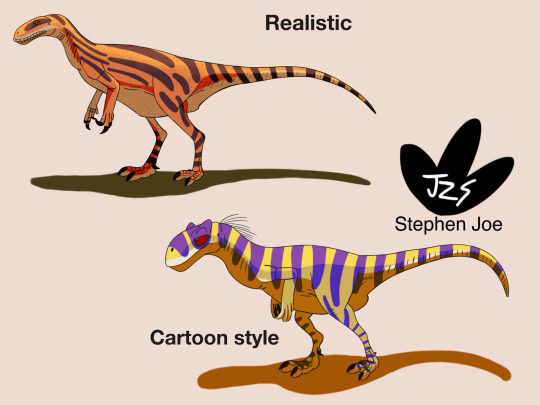
Day 9: Masiakasaurus
Time for me to do something fun where I haven’t done in the past before, realistic vs cartoon style.
#my art#dinosaur#paleoart#myart#dinosaurs#dinosauria#my drawings#masiakasaurus#dinocember#cartoon#noasauridae#ceratosauria#theropoda#sketchbookapp#sketchbook app#artists on tumblr
7 notes
·
View notes
Text
Kiyacursor longipes a new species of ceratosauria 40 million years younger than any other known ceratosauria fossil
1 note
·
View note
Text
I paleontologi scoprono una nuova specie di ceratosauro
Il Kiyacursor longipes è la prima specie di ceratosauro conosciuta nel primo Cretaceo dell’Asia, estendendo la gamma stratigrafica del gruppo di dinosauri Ceratosauria di 40 milioni di anni nel continente. La specie di dinosauro appena scoperta è vissuta in quella che oggi è la Siberia tra 121 e 113 milioni di anni fa (prima epoca del Cretaceo). Chiamata Kiyacursor longipes, l’antica creatura…

View On WordPress
0 notes
Text
Paleontologists Discover New Species of Ceratosaur
Kiyacursor longipes is the first species of ceratosaur known from the Early Cretaceous of Asia, extending the stratigraphic range of the dinosaur group Ceratosauria by 40 million years on the continent. Kiyacursor longipes, referred specimen (b) and holotype (c-j). Image credit: Averianov et al., doi: 10.1098/rspb.2024.0537. The newly-discovered dinosaur species lived in what is now Siberia…

View On WordPress
0 notes